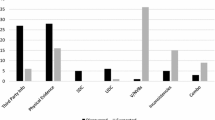Abstract
We usually speculate partner’s mental states by diverse nonverbal information. Agents need the ability for natural communication with people. In this paper, we focused on a lie as one of the typical behavior in which we often express our mental states unconsciously. The purpose of this study is to experimentally investigate the possibility of automatic lie detection in communication. We proposed an experimental setting in which participants could spontaneously decide whether or not to tell a lie. We then conducted an experiment to record participants’ behavior in this setting. After that, we investigated, by discriminant analysis, that we could achieve 68% accuracy in classifying the utterances into lies and the rest without taking account of individual features by using the noverbal behavior data. We would detect participants’ stresses when they told a lie. The suggestions in this paper are useful to an agent which pays attention to user’s mental states.
Preview
Unable to display preview. Download preview PDF.
Similar content being viewed by others
References
Bond Jr., C.F., DePaulo, B.M.: Accuracy of Deception Judgments. Personality and Social Psychology Review 10(3), 214–234 (2006)
Daibou, I.: The social meaning of interpersonal communication. Japanese Journal of Interpersonal and Social Psychology 1, 1–16 (2001)
DePaulo, B.M., Lindsay, J.J., Malone, B.E., Muhlenbruck, L., Charlton, K., Cooper, H.: Cues to deception. Psychological Bulletin 129(1), 74–118 (2003)
Ekman, P.: Telling Lies: Clues to Deceit in the Marketplace, Politices, and Marriage. W.W. Norton & Company, New York (1985)
Ekman, P., O’Sullivan, M., Frank, M.G.: A few can catch a liar. Psychological Science 10, 263–266 (1999)
Hopper, R., Bell, R.A.: Broadening the deception construct. Quarterly Journal of Speech 70, 288–302 (1984)
Kanno, T., Keiichi, N., Kazuo, F.: A method for team intention inference. International Journal of Human-Computer Studies 58, 393–413 (2003)
Kozel, F.A., Johnson, K.A., Mu, Q., Grenesko, E.L., Laken, S.J., George, M.S.: Detecting Deception Using Functional Magnetic Resonance Imaging. Biological Psychiatry 58(8,15), 605–613 (2005)
Meservy, T.O., Jensen, M.L., Kruse, J., Twitchell, D.P., Tsechpenakis, G., Burgoon, J.K., Metaxas, D.N., Nunamaker, J.F.: Deception Detection through Automatic, Unobtrusive Analysis of Nonverbal Behavior. IEEE Intelligent Systems 20(5), 36–43 (2005)
Ohmoto, Y., Ueda, K., Ohno, T.: Real-time system for measuring gaze direction and facial features: towards automatic discrimination of lies using diverse nonverbal information. AI & Society 23(2), 187–200 (2007)
Prendinger, H., Ishizuka, M.: The empathic companion: a character-based interface that addresses users’ aective states. Applied Artifcial Intelligence 19(3/4), 267–285 (2005)
Raskin, D.C., Honts, C.R.: The comparison question test. In: Kleiner, M. (ed.) Handbook of Polygraph Testing. Academic Press, London (2002)
Vrij, A., Akehurst, L., Soukara, S., Bull, R.: Detecting Deceit via Analyses of Verbal and Nonverbal Behaviour in Children and Adults. Human Communication Research 30(1), 8–41 (2004)
Yotsukura, T., Uchida, H., Yamada, H., Akamatsu, S., Tetsutani, N., Morishima, S.: A Micro-Temporal Analysis of Facial Movements and Synthesis Spontaneously Elicited and Posted Expressions of Emotion Using High-Speed Camera. IEICE technical report. Image engineering. 101(300), 15-22 (2001)
Walters, M.L., Syrdal, D.S., Dautenhahn, K., te Boekhorst, R., Koay, K.L.: Avoiding the uncanny valley: robot appearance, personality and consistency of behavior in an attention-seeking home scenario for a robot companion. Autonomous Robots 24(2), 159–178 (2008)
Zuckerman, M., DePaulo, B.M., Rosenthal, R.: Verbal and nonverbal communication of deception. In: Berkowitz, L. (ed.) Advances in experimental Social Psychology, vol. 14, pp. 1–59 (1981)
Author information
Authors and Affiliations
Editor information
Editors and Affiliations
Rights and permissions
Copyright information
© 2009 Springer-Verlag Berlin Heidelberg
About this paper
Cite this paper
Ohmoto, Y., Ueda, K., Ohno, T. (2009). A Method to Detect Lies in Free Communication Using Diverse Nonverbal Information: Towards an Attentive Agent. In: Liu, J., Wu, J., Yao, Y., Nishida, T. (eds) Active Media Technology. AMT 2009. Lecture Notes in Computer Science, vol 5820. Springer, Berlin, Heidelberg. https://doi.org/10.1007/978-3-642-04875-3_10
Download citation
DOI: https://doi.org/10.1007/978-3-642-04875-3_10
Publisher Name: Springer, Berlin, Heidelberg
Print ISBN: 978-3-642-04874-6
Online ISBN: 978-3-642-04875-3
eBook Packages: Computer ScienceComputer Science (R0)




